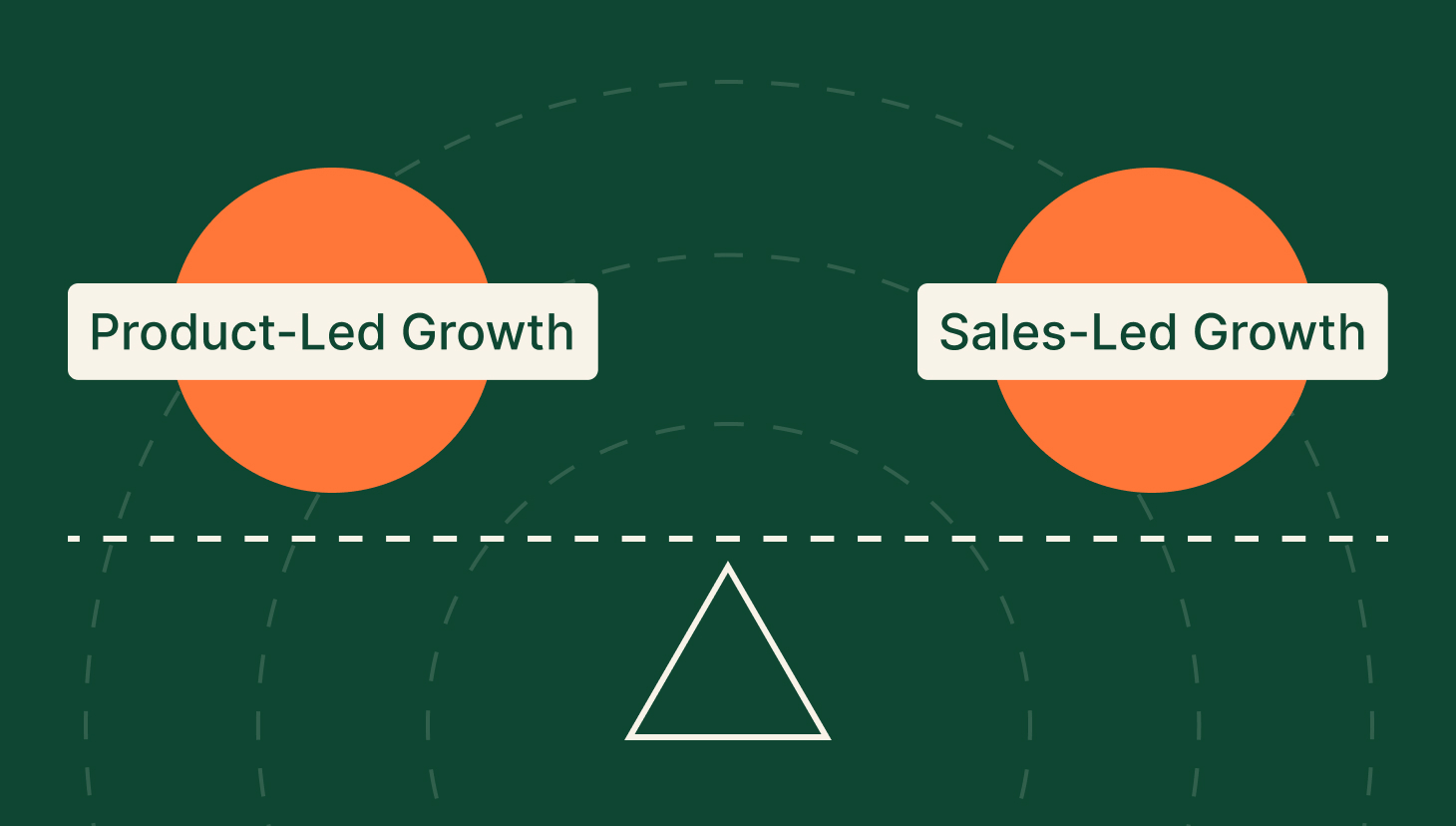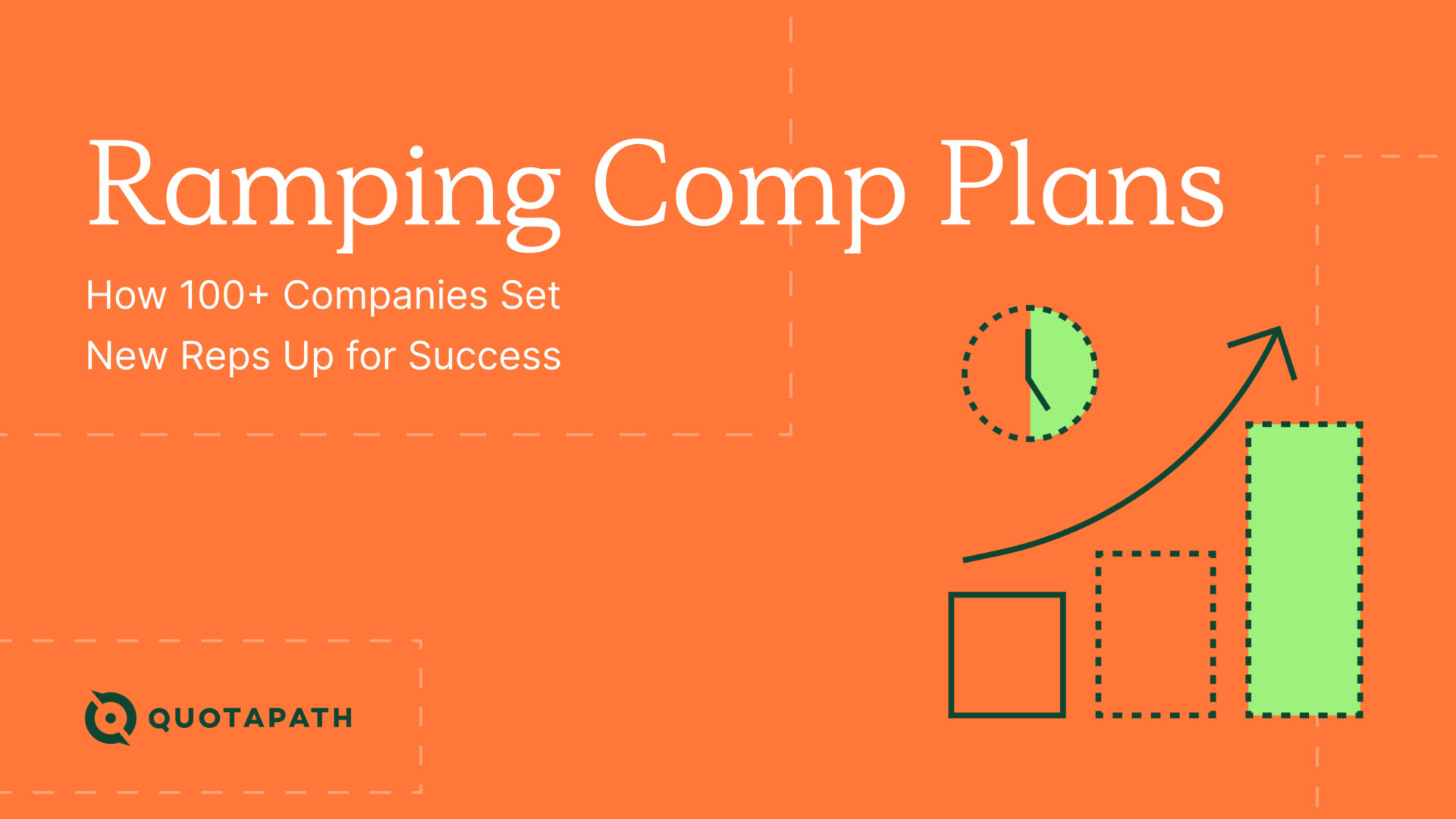The rise of Product-Led Growth (PLG) has fundamentally transformed how B2B SaaS companies drive revenue.
Companies can nurture product engagement and drive organic growth by allowing users to experience the product firsthand—often through free trials or freemium models. In fact, PLG has been adopted by 58% of B2B SaaS companies as part of their go-to-market strategy.
Yet, as effective as PLG can be for scaling, the need for a sales team becomes increasingly critical, especially when converting free users into enterprise-level deals.
While freemium models boast impressive conversion rates—12% at the median, 140% higher than free trials—they are often just the starting point for larger opportunities.
That’s why as PLG companies grow, many add a sales-led motion to close bigger deals.
For instance, nearly 61% of PLG companies launch enterprise sales teams by the time they reach $50 million in annual revenue.
This hybrid approach of PLG and Sales-Led Growth (SLG), known as Product-Led Sales (PLS), is becoming essential— which requires strategic alignment and collaboration across your GTM and product teams.
Below, we share 10 best practices for running a combined PLG-SLG motion, offering practical insights to help leaders balance both strategies. By leveraging PLG’s organic growth potential alongside the precision of a sales-led approach, companies can achieve long-term, scalable success.
Understanding the Differences Between PLG and SLG
- Product-Led Growth (PLG) relies on the product as the main revenue driver. Companies like Slack and Dropbox exemplify this model, offering free tiers or trials to attract users who convert to paid customers based on product usage alone.
Key signals in PLG include product usage metrics, free-to-paid conversions, and user behavior within the product. PLG is particularly effective for scaling through self-service users, especially in SaaS, with freemium models often achieving conversion rates around 12%.
- Sales-Led Growth (SLG), on the other hand, uses traditional sales methods. Companies like Salesforce and Oracle rely on outbound prospecting, lead qualification, and direct sales engagement to close deals. Key SLG signals include outbound outreach, marketing-qualified leads (MQLs), and cold prospecting. SLG is essential for closing larger deals, particularly in the enterprise market, where high-touch interactions are needed to navigate complex purchasing processes.
Both models can coexist, with companies like HubSpot blending PLG for smaller customers and SLG for larger enterprise deals.
10 Best Practices For Running a PLG and Sales-Led Motion
To successfully manage a blended PLG and SL motion, implement best practices that ensure clear data separation, flexible attribution, and cross-team collaboration.
You can start with these 10 best practices, such as defining separate revenue types and creating distinct pipelines for each motion, to help your teams maximize efficiency and drive growth in both models.
Separate Revenue Streams and Pipelines
Best Practice #1: Define Separate Revenue Types
Track PLG and SLG revenue streams separately. This is a “must” to understand how each model contributes to overall business growth.
With PLG revenue driven by user-initiated actions such as free-to-paid conversions and SLG revenue driven by traditional sales efforts, maintaining separate streams allows for clearer performance measurement and attribution.
This separation helps companies identify which motion is more effective in specific market segments and informs resource allocation decisions based on actual revenue impact.
Best Practice #2: Create Distinct Pipelines for Each Motion
Creating distinct sales pipelines for PLG and SLG ensures accurate tracking of deal progress and process management.
For instance, in a PLG pipeline, the focus is on product usage signals, such as trial activations or feature engagement, which trigger actions like sales outreach or automated nudges.
Meanwhile, an SLG pipeline follows traditional sales stages, from prospecting to closed deals, allowing teams to manage high-touch customer interactions more effectively.
By holding separate pipelines, you can tailor your strategies to the specific needs of each motion, improving overall operational efficiency and forecasting accuracy.
Try QuotaPath for free
Try the most collaborative solution to manage, track and payout variable compensation. Calculate commissions and pay your team accurately, and on time.
Start TrialBuilding Data Flexibility and Attribution
Best Practice #3: Utilize a Data Warehouse (Optional)
While totally optional, you might want to consider utilizing a data warehouse.
A data warehouse offers flexibility when integrating both PLG and SLG data, enabling companies to combine product usage metrics with traditional sales data in one place.
This centralized approach helps scale PLG operations by keeping data unified while allowing for more complex analysis, such as tracking product-qualified leads alongside sales-qualified leads.
Best Practice #4: Establish Clear Attribution and Source Data
Next up, you have to establish clear attribution.
This is essential for tracking how leads move between PLG and SLG. By mapping different lead sources—whether they originated from product usage or sales outreach—you ensure that each touchpoint is accurately recorded and attributed to the appropriate team.
Doing so will set your GTM team up to optimize marketing efforts and provide a clearer picture of cross-sell and expansion opportunities, particularly as customers shift between PLG and SLG motions.
Collaborating Across Teams
Best Practice #5: Collaboration Between RevOps, Sales, and Product Teams
Our fifth best practice involves none other than collaboration across RevOps, Sales, and Product teams. This is key.
Sales teams can prioritize high-value PLG leads based on product usage, while RevOps can facilitate smooth transitions between PLG and SLG as customers move from self-service to enterprise sales.
You should also collaborate with leaders to define clear roles and responsibilities across teams so that no opportunities are lost.
Best Practice #6: Involve Sales Reps in PLG Feedback
Additionally, remember to source your reps for feedback.
Sales reps are often the first to identify trends and behaviors among PLG leads that may signal readiness for sales engagement.
Incorporating their feedback into PLG processes allows for more accurate lead scoring, which can help your team prioritize which users receive the proper attention. This feedback loop improves overall conversion rates by fine-tuning how product signals are interpreted and acted upon by the sales team.
Leveraging HubSpot to Manage PLG and SLG Together
Best Practice #7: Using Custom Objects and Deal Types
This wouldn’t be a RevOps-focused article if we didn’t recommend implementing technology to help; this time, we suggest HubSpot.
HubSpot’s custom objects and deal types provide a powerful way to differentiate between PLG and SLG processes.
You can automate actions based on customer behaviors by setting up distinct deal types for product-led and sales-led opportunities. For example, trial users in a PLG motion might trigger sales-assist actions when they reach certain product milestones, ensuring timely outreach from your sales team.
Best Practice #8: Automate Where Possible
If you haven’t realized this yet, automation is generally critical, especially when simultaneously managing PLG and SLG.
You can reduce manual tasks by automating deal creation, lead scoring, and movement based on product usage or engagement signals. A good example of this is found in HubSpot, which can automatically move a deal to “won” or “lost” based on trial outcomes or subscription payments, streamlining your pipeline management.
Starting Simple and Scaling into Complexity
Best Practice #9: Start Simple with Minimal Complexity
Lastly, our final two best practices focus on simplicity and adding complexity as you grow.
When beginning with PLG and SLG motions, simplicity is key.
Start with a single sales pipeline and gradually layer in more complex automations and deal types as your company grows.
Focus first on capturing the basic signals of both motions—such as trial conversions and outbound sales—before expanding into more sophisticated tracking and lead management processes.
Best Practice #10: Iterative Improvements
And, of course, iterate.
Based on data and customer behavior, you should refine your PLG and SLG processes.
Review your performance metrics, conversion rates, and handoff processes regularly to optimize both motions. As your business evolves, make iterative improvements to your systems, automation, and collaboration efforts to keep up with changing customer needs and market conditions.
Streamline commissions for your RevOps, Finance, and Sales teams
Design, track, and manage variable incentives with QuotaPath. Give your RevOps, finance, and sales teams transparency into sales compensation.
Talk to SalesSeamless Integration for Growth
In conclusion, managing PLG and SLG requires a unified yet distinct approach to ensure that each motion operates effectively while contributing to overall growth.
By defining separate revenue types, creating distinct pipelines, and fostering collaboration between teams, you can optimize both motions for success.
Leveraging tools like HubSpot for automation and data tracking further enhances your ability to manage these motions efficiently.
You can also use QuotaPath to support comp plan creation and automate and manage compensation strategies that drive team behaviors behind your PLG motion and your sellers. (To learn more, schedule time here).



